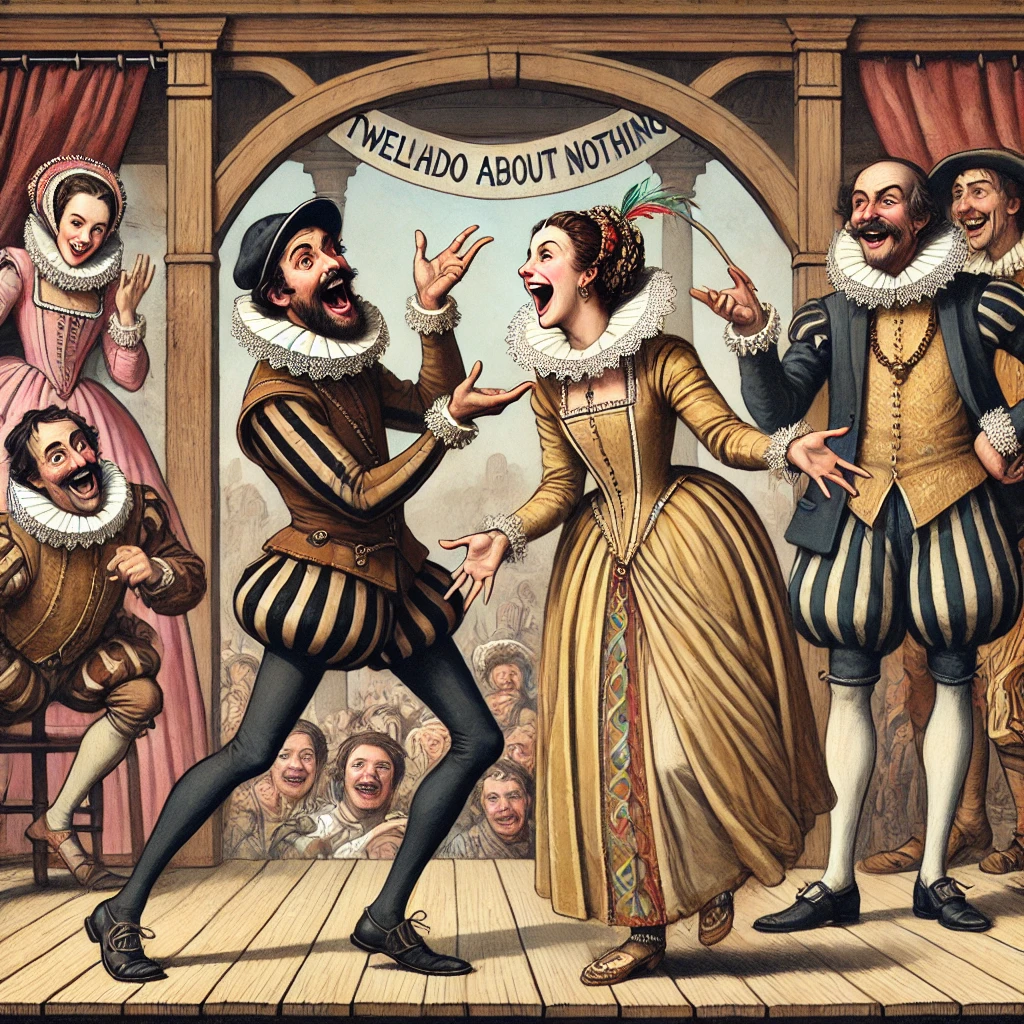
Humor and Social Commentary in Shakespeare’s Comedies
Using humor as social commentary, Shakespeare addressed gender roles, authority, and social customs. In Twelfth Night, for instance, a case of accidental cross-dressing reveals the rigid gender norms of the era, challenging the expectations of gender identity and clothing. (Leflore, 2023)
Shakespeare also employed wit and wordplay as a means to critique societal norms, evident in Beatrice’s clever dialogue in Much Ado About Nothing, where marriage and gender expectations are subject to scrutiny. As his work matured, his comedic style evolved to incorporate darker themes. This is particularly visible in works like Winter’s Tail and The Tempest, where humor shifts to explore themes of jealousy and redemption—fundamental aspects of society. (Leflore, 2023)
Marriage and relationships are frequent targets of Shakespeare’s humor. Not only does he celebrate the institution of marriage, but he also critiques it by questioning traditional gender roles and the balance of power. In The Taming of the Shrew, Catherine challenges societal expectations regarding gender and power dynamics within marriage. (Leflore, 2023)
Overall, Shakespeare’s comedies offer more than just entertainment; they provide thoughtful commentary on societal absurdities and injustices. His work encourages audiences to reflect on the complexities of the human condition—a relevance that endures even today. Despite the passage of centuries, the humor and social commentary in Shakespeare’s comedies continue to reveal fresh insights, often overshadowed by the celebrated tragedies.
